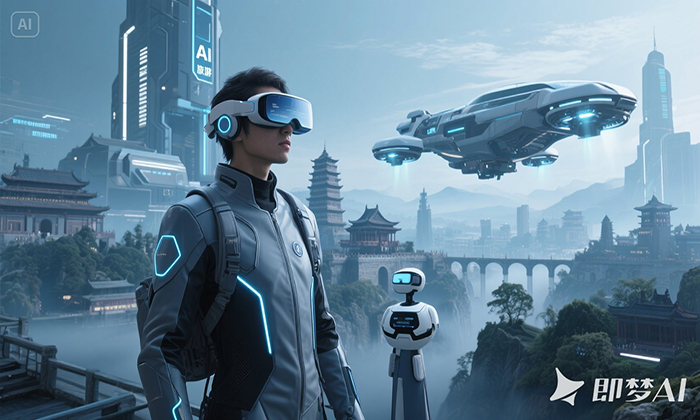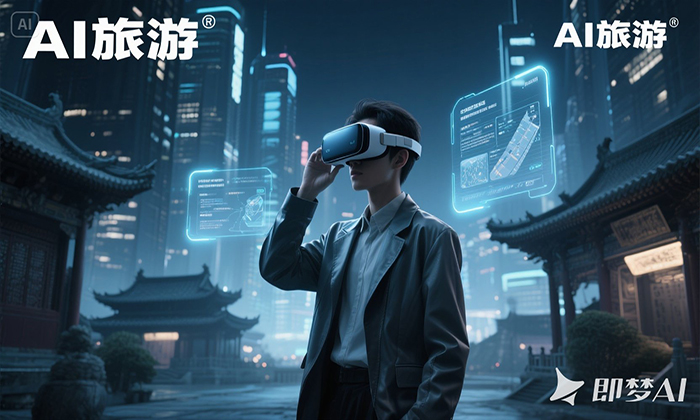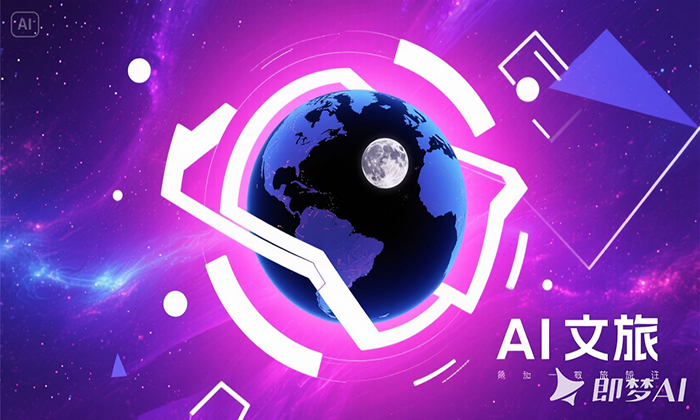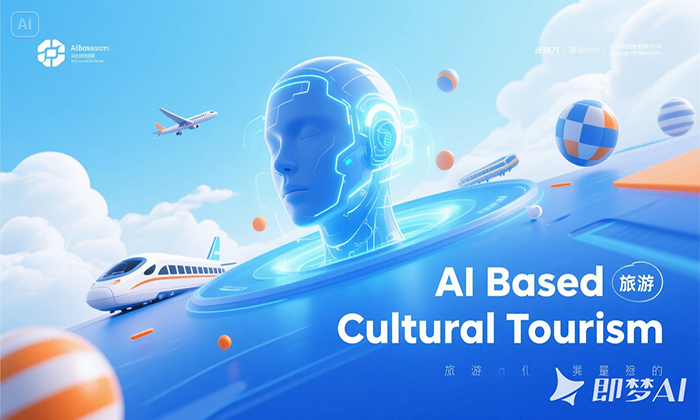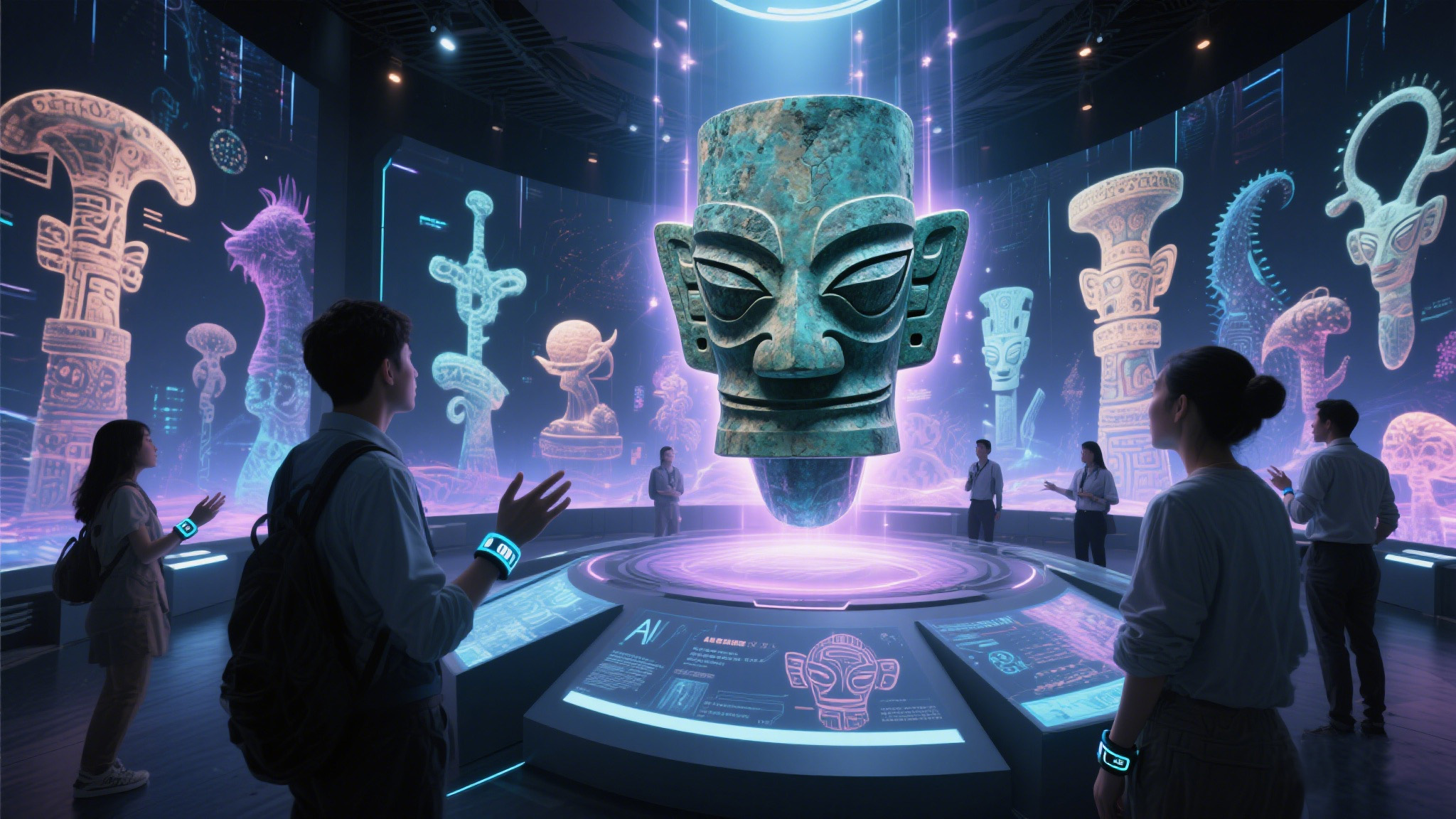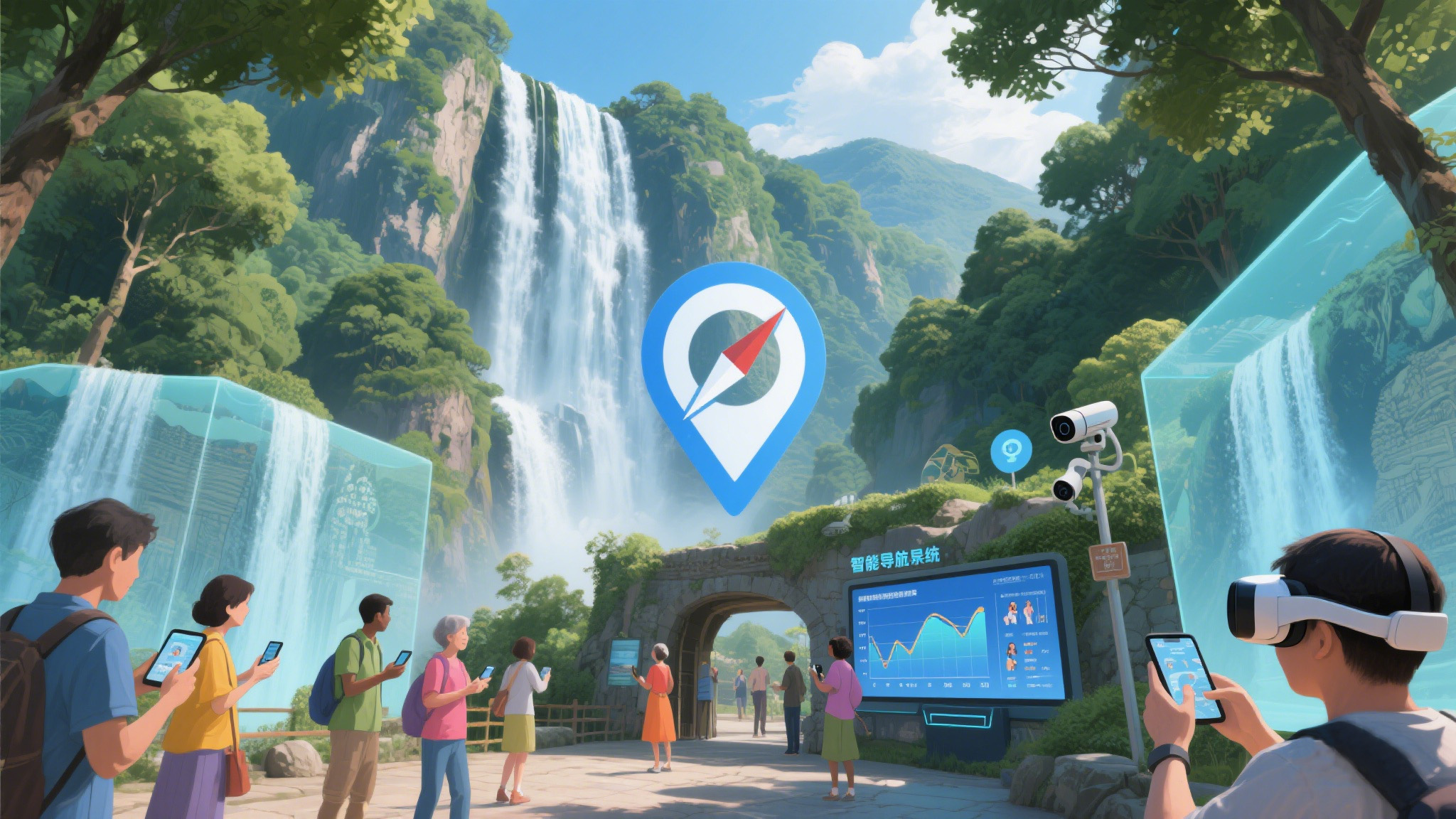The Integration of AI in Cultural and Tourism Industries: A New Era of Smart Exploration
江浸月 2025-05-26
In the era of rapid technological advancement, artificial intelligence (AI) has emerged as a transformative force across various industries, and the cultural and tourism sectors are no exception.
In the era of rapid technological advancement, artificial intelligence (AI) has emerged as a transformative force across various industries, and the cultural and tourism sectors are no exception. As the world becomes more connected and travelers seek more personalized, immersive, and meaningful experiences, AI is revolutionizing the way we engage with cultural heritage and explore tourist destinations. This article delves into the profound impact of AI on cultural and tourism industries, highlighting its applications in enhancing visitor experiences, preserving cultural heritage, and optimizing industry operations.
One of the most significant ways AI is shaping the 文旅 (cultural and tourism) landscape is through personalized experience delivery. Traditional tourism often relies on generic guides and one - size - fits - all recommendations, which may not meet the diverse needs and interests of modern travelers. AI, with its ability to analyze vast amounts of data, can create highly customized experiences. For example, AI - powered chatbots can interact with tourists, understanding their preferences for types of attractions (such as historical sites, natural wonders, or modern art museums), dining habits, and travel budgets. Based on this information, they can recommend tailored itineraries, suggesting the best places to visit, eat, and stay at different times of the day.
In the realm of cultural heritage, AI plays a crucial role in preservation and presentation. Many cultural relics and historical sites are at risk due to natural degradation, human activities, or disasters. AI - based technologies such as 3D scanning and digital reconstruction allow for the creation of detailed virtual models of these treasures. For instance, in museums, AI can enhance the display of artifacts by providing interactive exhibits. Through augmented reality (AR) and virtual reality (VR) integrated with AI algorithms, visitors can not only see static displays but also experience historical events in a more immersive way. They can "walk" through ancient civilizations, witnessing how people lived, worked, and created art, all from the safety of the museum or even from the comfort of their own homes through online platforms.
AI also optimizes the operational aspects of the tourism industry. Hotels and travel agencies are using AI - driven systems to manage reservations, handle customer service inquiries, and predict demand. For hotels, AI can analyze past booking data, seasonal trends, and even local events to adjust prices dynamically, ensuring optimal occupancy and revenue. In addition, AI - enabled security systems in tourist destinations can monitor crowds, detect potential safety threats, and enhance the overall security of visitors.
Moreover, AI is facilitating the discovery of off - the - beaten - path cultural and tourism destinations. By analyzing social media data, travel reviews, and search patterns, AI algorithms can identify lesser - known but equally fascinating places. This not only helps in distributing tourist traffic more evenly, reducing overcrowding in popular spots but also promotes the economic development of relatively unknown areas. For example, a traveler interested in traditional folk music might be recommended a small village festival that showcases unique local music traditions, which they would have otherwise missed without the help of AI.
However, like any technological innovation, the integration of AI in cultural and tourism industries also poses some challenges. There are concerns about data privacy, as AI relies on collecting and analyzing personal data of travelers. Ensuring the security and proper use of this data is of utmost importance. Additionally, there is a need to balance the use of technology with the preservation of the authentic cultural and natural experiences. While AI can enhance visits, it should not overshadow the real - world charm and authenticity of cultural heritage sites and tourist destinations.
In conclusion, the integration of AI in the cultural and tourism industries is opening up a new era of smart exploration. It is enhancing visitor experiences through personalization, safeguarding cultural heritage for future generations, and optimizing industry operations. As technology continues to evolve, the potential for AI in these sectors is boundless. By addressing the associated challenges and leveraging its benefits, the cultural and tourism industries can embrace AI to create more inclusive, sustainable, and enriching experiences for travelers around the world. The journey of AI in 文旅 is just beginning, and it promises to bring about exciting new possibilities in the years to come.
One of the most significant ways AI is shaping the 文旅 (cultural and tourism) landscape is through personalized experience delivery. Traditional tourism often relies on generic guides and one - size - fits - all recommendations, which may not meet the diverse needs and interests of modern travelers. AI, with its ability to analyze vast amounts of data, can create highly customized experiences. For example, AI - powered chatbots can interact with tourists, understanding their preferences for types of attractions (such as historical sites, natural wonders, or modern art museums), dining habits, and travel budgets. Based on this information, they can recommend tailored itineraries, suggesting the best places to visit, eat, and stay at different times of the day.
In the realm of cultural heritage, AI plays a crucial role in preservation and presentation. Many cultural relics and historical sites are at risk due to natural degradation, human activities, or disasters. AI - based technologies such as 3D scanning and digital reconstruction allow for the creation of detailed virtual models of these treasures. For instance, in museums, AI can enhance the display of artifacts by providing interactive exhibits. Through augmented reality (AR) and virtual reality (VR) integrated with AI algorithms, visitors can not only see static displays but also experience historical events in a more immersive way. They can "walk" through ancient civilizations, witnessing how people lived, worked, and created art, all from the safety of the museum or even from the comfort of their own homes through online platforms.
AI also optimizes the operational aspects of the tourism industry. Hotels and travel agencies are using AI - driven systems to manage reservations, handle customer service inquiries, and predict demand. For hotels, AI can analyze past booking data, seasonal trends, and even local events to adjust prices dynamically, ensuring optimal occupancy and revenue. In addition, AI - enabled security systems in tourist destinations can monitor crowds, detect potential safety threats, and enhance the overall security of visitors.
Moreover, AI is facilitating the discovery of off - the - beaten - path cultural and tourism destinations. By analyzing social media data, travel reviews, and search patterns, AI algorithms can identify lesser - known but equally fascinating places. This not only helps in distributing tourist traffic more evenly, reducing overcrowding in popular spots but also promotes the economic development of relatively unknown areas. For example, a traveler interested in traditional folk music might be recommended a small village festival that showcases unique local music traditions, which they would have otherwise missed without the help of AI.
However, like any technological innovation, the integration of AI in cultural and tourism industries also poses some challenges. There are concerns about data privacy, as AI relies on collecting and analyzing personal data of travelers. Ensuring the security and proper use of this data is of utmost importance. Additionally, there is a need to balance the use of technology with the preservation of the authentic cultural and natural experiences. While AI can enhance visits, it should not overshadow the real - world charm and authenticity of cultural heritage sites and tourist destinations.
In conclusion, the integration of AI in the cultural and tourism industries is opening up a new era of smart exploration. It is enhancing visitor experiences through personalization, safeguarding cultural heritage for future generations, and optimizing industry operations. As technology continues to evolve, the potential for AI in these sectors is boundless. By addressing the associated challenges and leveraging its benefits, the cultural and tourism industries can embrace AI to create more inclusive, sustainable, and enriching experiences for travelers around the world. The journey of AI in 文旅 is just beginning, and it promises to bring about exciting new possibilities in the years to come.







